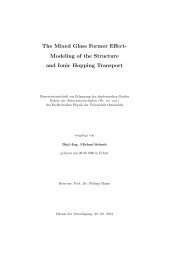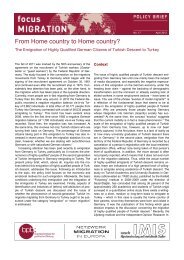356 Literatur PATTERSON, T. L., GOLDMAN, S., MCKIBBIN, C. L., HUGHS, T. & JESTE, D. V. (2001). USCD performance-based skills assessment: Development of a new measure of everyday functioning for severely mentally ill adults. Schizophrenia Bulletin, 27(2), 235-245. PAULHUS, D. L. (1984). Two-component models of socially desirable responding. Journal of Personality and Social Psychology, 46(3), 598-609. PAULHUS, D. L. (1986). Self-deception and impression management in test responses. In A. ANGLEITNER & J. S. WIGGINS (Hrsg.), Personality assessment via questionnaires. Current issues in theory and measurement (S. 143-165). Berlin: Springer. PAULHUS, D. L. (1998). The Paulhus deception scales: BIDR Version 7. Toronto: Multi-Health Systems. PAULHUS, D. L., FRIDHANDLER, B. & HAYES, S. (1997). Psychological defense. Contemporary theory and research. In R. HOGAN, J. A. JOHNSON & S. R. BRIGGS (Hrsg.), Handbook of personality psychology (S. 543-579). San Diego: Academic Press. PAULHUS, D. L. & JOHN, O. P. (1998). Egoistic and moralistic biases in self-perception: The interplay of self-deceptive styles with basic traits and motives. Journal of Personality, 66(6), 1025-1060. PAULHUS, D. L. & REID, D. B. (1991). Enhancement and denial in socially desirable responding. Journal of Personality and Social Psychology, 60(2), 307-317. PAWLIK, K. (1982). Modell- <strong>und</strong> Praxisdimensionen psychologischer Diagnostik. In K. PAWLIK (Hrsg.), Diagnose der Diagnostik: Beiträge zur Diskussion der psychologischen Diagnostik in der Verhaltensmodifikation (2. Aufl.) (S. 13-43). Stuttgart: Klett-Cotta. PEARLIN, L. I. (1983). Role strains and personal stress. In H. B. KAPLAN (Hrsg.), Psychosocial stress (S. 3-32). New York: Academic Press. PEARLIN, L. I. & SCHOOLER, C. (1978). The structure of coping. Journal of Health and Social Behavior, 19(1), 2-21. PENN, D. L., KOHLMAIER, J. R. & CORRIGAN, P. W. (2000). Interpersonal factors contributing to the stigma of schizophrenia: Social skills, perceived attractiveness, and symptoms. Schizophrenia Research, 45(1-2), 37-45. PERALTA, V. & CUESTA, M. J. (1994a). Psychometric properties of the Positive and Negative Syndrome Scale (PANSS) in schizophrenia. Psychiatry Research, 53(1), 31-40. PERALTA, V. & CUESTA, M. J. (1994b). Lack of insight: Its status within schizophrenic psychopathology. Biological Psychiatry, 36(8), 559-561. PERALTA, V. & CUESTA, M. J. (2001). How many and which are the psychopathological dimensions in schizophrenia? Issues influencing their ascertainment. Schizophrenia Research, 49(3), 269-285. PERKINS, D. O. (2002). Predictors of noncompliance in patients with schizophrenia. Journal of Clinical Psychiatry, 63(12), 1121-1128. PERRINE, K. (1993). Differential aspects of conceptual processing in the Category Test and Wisconsin Card Sorting Test. Journal of Clinical and Experimental Neuropsychology, 15(4), 461-473. PERRY, J. C. & COOPER, S. H. (1989). An empirical study of defense mechanisms I: Clinical interview and life vignette ratings. Archives of General Psychiatry, 46(5), 444-452. PERRY, W. & BRAFF, D. L. (1998). A multimethod approach to assessing perseverations in schizophrenia patients. Schizophrenia Research, 33(1-2), 69-78. PERRY, W., HEATON, R. K., POTTERAT, E., ROEBUCK, T., MINASSIAN, A. & BRAFF, D. L. (2001). Working memory in schizophrenia: Transient 'on-line' storage versus executive functioning. Schizophrenia Bulletin, 27(1), 157-176. PERRY, W., POTTERAT, E. G. & BRAFF, D. L. (2001). Self-monitoring enhances Wisconsin Card Sorting Test performance in patients with schizophrenia: Performance is improved by simply asking patients to verbalize their sorting strategy. Journal of the International Neuropsychological Society, 7(3), 344-352. PETERSON, J. B., DEYOUNG, C. G., DRIVER-LINN, E., SÉGUIN, J. R., HIGGINS, D. M., ARSENEAULT, L. & TREMBLAY, R. E. (2003). Self-deception and failure to modulate responses despite accruing evidence of error. Journal of Research in Personality, 37(3), 205-223. PETRIDES, M. (2002). The mid-ventrolateral prefrontal cortex and active mnemonic retrieval. Neurobiology of Learning and Memory, 78(3), 528-538. PETZ, T., DIETE, S., GADEMANN, G. & WALLESCH, C.-W. (2001). Krankheitsverarbeitung bei Hirntumorpatienten: Eine Untersuchung im Verlauf der Bestrahlung. Psychotherapie Psychosomatik Medizinische Psychologie, 51(7), 281- 287. PHILLIPS, C. M., COOKE, M. A., COOKE, A. & PETERS, E. R. (2007). Identity and cause of problems: The perceptions of patients with a diagnosis of schizophrenia. Behavioural and Cognitive Psychotherapy, 35(2), 237-240. PIA, L., NEPPI-MODONA, M., RICCI, R. & BERTI, A. (2004). The anatomy of anosognosia for hemiplegia: A meta-analysis. Cortex, 40(2), 367-377. PIA, L. & TAMIETTO, M. (2006). Unawareness in schizophrenia: Neuropsychological and neuroanatomical findings. Psychiatry and Clinical Neurosciences, 60(5), 531-537. PICK, A. (1882). Ueber Krankheitsbewusstsein in psychischen Krankheiten. Eine historisch-klinische Studie. Archiv für Psychiatrie <strong>und</strong> Nervenkrankheiten, 13(3), 518-581. PICKUP, G. J. (2008). Relationship between Theory of Mind and executive function in schizophrenia: A systematic review. Psychopathology, 41(4), 206-213. PILOWSKY, I. (1969). Abnormal illness behaviour. British Journal of Medical Psychology, 42(4), 347-351.
357 Literatur PINI, S., CASSANO, G. B., DELL'OSSO, L. & AMADOR, X. F. (2001). Insight into illness in schizophrenia, schizoaffective disorder, and mood disorders with psychotic features. American Journal of Psychiatry, 158(1), 122-125. PILOWSKY, I. (1978). A general classification of abnormal illness behaviours. British Journal of Medical Psychology, 51(2), 131-137. PLUTCHIK, R. (1995). A theory of ego defenses. In H. R. CONTE & R. PLUTCHIK (Hrsg.), Ego defenses: Theory and measurement (S. 13-37). Oxford, England: John Wiley & Sons. POSNER, M. I. & DEHAENE, S. (1994). Attentional networks. Trends in Neurosciences, 17(2), 75-79. POSNER, M. I. & PETERSEN, S. E. (1990). The attention system of the human brain. Annual Review of Neuroscience, 13, 25-42. POSNER, M. I. & ROTHBART, M. K. (2007). Research on attention networks as a model for the integration of psychological science. Annual Review of Psychology, 58, 1-23. POUSA, E., DUÑÓ, R., NAVARRO, J. B., RUIZ, A. I., OBIOLS, J. E. & DAVID, A. S. (2008). Exploratory study of the association between insight and theory of mind (ToM) in stable schizophrenia patients. Cognitive Neuropsychiatry, 13(3), 210-232. PRATT, S. I., MUESER, K. T., DRISCOLL, M., WOLFE, R. & BARTELS, S. J. (2006). Medication nonadherence in older people with serious mental illness: Prevalence and correlates. Psychiatric Rehabilitation Journal, 29(4), 299-310. PRENTICE, K. J., GOLD, J. M. & BUCHANAN, R. W. (2008). The Wisconsin Card Sorting impairment in schizophrenia is evident in the first four trials. Schizophrenia Research, 106(1), 81-87. PRIGATANO, G. P. & KLONOFF, P. S. (1998). A clinician’s rating scale for evaluating impaired self-awareness and denial of disability after brain injury. The Clinical Neuropsychologist, 12(1), 56-67. PRIGATANO, G. P. & SCHACTER, D. L. (1991). Awareness of deficit after brain injury: Clinical and theoretical issues. New York, NY, US: Oxford University Press. PRINCE, J. D. (2007). Therapeutic alliance, illness awareness, and number of hospitalizations for schizophrenia. Journal of Nervous and Mental Disease, 195(2), 170-174. PURDON, S. E. & WALDIE, B. (2001). A short form of the Wisconsin Card Sorting Test. Journal of Psychiatry & Neuroscience, 26(3), 253-256. PYNE, J. M., BEAN, D. & SULLIVAN, G. (2001). Characteristics of patients with schizophrenia who do not believe they are mentally ill. Journal of Nervous and Mental Disease, 189(3), 146-153. QUERY, W. T. & MEGRAN, J. (1983). Age-related norms for AVLT in a male patient population. Journal of Clinical Psychology, 39(1), 136-138. QUILLAMS, L. & ADDINGTON, J. (2003). Insight, knowledge, and beliefs about illness in first-eisode psychosis. The Canadian Journal of Psychiatry, 48(5), 350. RABIN, L. A., BARR, W. B. & BURTON, L. A. (2005). Assessment practices of clinical neuropsychologists in the United States and Canada: A survey of INS, NAN, and APA Division 40 members. Archives of Clinical Neuropsychology, 20(1), 33-65. RAFFARD, S., BAYARD, S., GELY-NARGEOT, M.-C., CAPDEVIELLE, D., MAGGI, M., BARBOTTE, E., MORRIS, D. & BOULENGER, J.-P. (2009). Insight and executive functioning in schizophrenia: A multidimensional approach. Psychiatry Research, 167(3), 239-50 RAGLAND, J. D., YOON, J., MINZENBERG, M. J. & CARTER, C. S. (2007). Neuroimaging of cognitive disability in schizonphrenia: Search for a pathophysiological mechanism. International Review of Psychiatry, 19(4), 419-429. REICHENBERG, A. & HARVEY, P. D. (2007). Neuropsychological impairments in schizophrenia: Integration of performance-based and brain imaging findings. Psychological Bulletin, 133(5), 833-858. REITAN, R. M. (1958). Validity of the Trail Making Test as an indicator of organic brain damage. Perceptual and Motor Skills, 8, 1958. pp. 271-276. REITAN, R. M. (1979). A manual for the administration of neuropsychological test batteries for adults and children. Tucson, USA: Neuropsychological Laboratory. REITAN, R. M. & WOLFSON, D. (1994). A selective and critical review of neuropsychological deficits and the frontal lobes. Neuropsychology Review, 4(3), 161-198. RÉMILLARD, S., POURCHER, E. & COHEN, H. (2005). The effect of neuroleptic treatments on executive function and symptomatology in schizophrenia: A 1-year follow up study. Schizophrenia Research, 80(1), 99-106. REMPFER, M., HAMERA, E., BROWN, C. & BOTHWELL, R. J. (2006). Learning proficiency on the Wisconsin Card Sorting Test in people with serious mental illness: What are the cognitive characteristics of good learners? Schizophrenia Research, 87(1-3), 316-322. REY, A. (1964). L'examen clinique en psychologie. Presses Universitaires de France. RHODES, M. G. (2004). Age-related differences in performance on the Wisconsin Card Sorting Test: A meta-analytic review. Psychology and Aging, 19(3), 482-494. RIES, M., JABBAR, B., SCHMITZ, T., TRIVEDI, M., GLEASON, C., CARLSSON, C., ROWLEY, H. A., ASTHANA, S. & JOHNSON, S. C. (2007). Anosognosia in mild cognitive impairment: Relationship to activation of cortical midline structures involved in self-appraisal. Journal of the International Neuropsychological Society, 13(3), 450-461. RIESSMAN, C. K. (1993). Narrative analysis. Thousand Oaks, USA: Sage Publications.
- Seite 1 und 2:
Krankheitseinsicht, dynamisch getes
- Seite 3 und 4:
Danksagung iii Einleitung Es wird Z
- Seite 5 und 6:
v Einleitung 5.2.3.5 Prozessorienti
- Seite 7 und 8:
vii Einleitung 12.1.3 Ergebnisse St
- Seite 9 und 10:
ix Einleitung Tabelle 45. Hauptkomp
- Seite 11 und 12:
Tabelle 1. Verzeichnis der wichtigs
- Seite 13 und 14:
Abstract xiii Einleitung Objective:
- Seite 15 und 16:
15 Einleitung Angesichts der Belieb
- Seite 17 und 18:
17 Einleitung Bewältigungsmodell v
- Seite 19 und 20:
19 Wisconsin Card Sorting Test 2001
- Seite 21 und 22:
21 Wisconsin Card Sorting Test Effe
- Seite 23 und 24:
23 Wisconsin Card Sorting Test Das
- Seite 25 und 26:
Tabelle 2. Exekutive und Arbeitsged
- Seite 27 und 28:
3.3 Durchführung und Kennwerte des
- Seite 29 und 30:
3.4 WCST-Defizite bei Schizophrenie
- Seite 31 und 32:
Tabelle 5. Konzeptuelles Schema zur
- Seite 33 und 34:
3.5.1 Attributidentifikation / Abst
- Seite 35 und 36:
35 Wisconsin Card Sorting Test oder
- Seite 37 und 38:
37 Wisconsin Card Sorting Test elem
- Seite 39 und 40:
39 Wisconsin Card Sorting Test ein
- Seite 41 und 42:
41 Wisconsin Card Sorting Test Fehl
- Seite 43 und 44:
43 Wisconsin Card Sorting Test zus
- Seite 45 und 46:
45 Wisconsin Card Sorting Test Lern
- Seite 47 und 48:
3.5.5 Orientierungsvariablen 47 Wis
- Seite 49 und 50:
49 Wisconsin Card Sorting Test zehn
- Seite 51 und 52:
51 Wisconsin Card Sorting Test Fehl
- Seite 53 und 54:
53 Wisconsin Card Sorting Test mit
- Seite 55 und 56:
55 Wisconsin Card Sorting Test PAOL
- Seite 57 und 58:
Tabelle 6. Übersicht über Studien
- Seite 59 und 60:
3.7.3 Faktorstruktur des WCST 59 Wi
- Seite 61 und 62:
Tabelle 7 (Fortsetzung). (o) (p) (q
- Seite 63 und 64:
3.8.2 Bildung 63 Wisconsin Card Sor
- Seite 65 und 66:
3.9 Der Dynamische WCST in der Schi
- Seite 67 und 68:
67 Wisconsin Card Sorting Test darg
- Seite 69 und 70:
69 Wisconsin Card Sorting Test WIED
- Seite 71 und 72:
71 Wisconsin Card Sorting Test Durc
- Seite 73 und 74:
73 Wisconsin Card Sorting Test 3.9.
- Seite 75 und 76:
75 Wisconsin Card Sorting Test WALL
- Seite 77 und 78:
4. Statistische Modelle der Veränd
- Seite 79 und 80:
79 Reliable Change Index mittleren
- Seite 81 und 82:
81 Reliable Change Index (b) x2 sol
- Seite 83 und 84:
83 Reliable Change Index (3.) regre
- Seite 85 und 86:
85 Reliable Change Index Bei einem
- Seite 87 und 88:
87 Reliable Change Index statistisc
- Seite 89 und 90:
89 Reliable Change Index der Differ
- Seite 91 und 92:
91 Reliable Change Index Patienten
- Seite 93 und 94:
93 Reliable Change Index Tabelle 8.
- Seite 95 und 96:
95 Reliable Change Index WIEDL, WIE
- Seite 97 und 98:
97 Coping und Abwehr (3.) die oftma
- Seite 99 und 100:
Darstellung der wichtigsten tiefenp
- Seite 101 und 102:
101 Coping und Abwehr unterschiedli
- Seite 103 und 104:
103 Coping und Abwehr von Bewältig
- Seite 105 und 106:
105 Coping und Abwehr bedrohliche K
- Seite 107 und 108:
107 Coping und Abwehr das Problem d
- Seite 109 und 110:
5.2.3.6 Antezedenzien von Bewertung
- Seite 111 und 112:
6. Krankheitseinsicht von Menschen
- Seite 113 und 114:
113 Krankheitseinsicht die Bedeutun
- Seite 115 und 116:
115 Krankheitseinsicht Kombination
- Seite 117 und 118:
117 Krankheitseinsicht negative Bew
- Seite 119 und 120:
119 Krankheitseinsicht Während die
- Seite 121 und 122:
121 Krankheitseinsicht WARNER, TAYL
- Seite 123 und 124:
123 Krankheitseinsicht Symptomatik
- Seite 125 und 126:
125 Krankheitseinsicht (z. B. aus d
- Seite 127 und 128:
127 Krankheitseinsicht Diesem Zweck
- Seite 129 und 130:
6.5.2 Krankheitseinsicht: Begriffsk
- Seite 131 und 132:
131 Krankheitseinsicht Der erste be
- Seite 133 und 134:
Tabelle 11. Konfigurationen von Ein
- Seite 135 und 136:
6.5.4.1 Einsichts-Interviews 135 Kr
- Seite 137 und 138:
137 Krankheitseinsicht having sympt
- Seite 139 und 140:
139 Krankheitseinsicht Self-Apprais
- Seite 141 und 142:
141 Krankheitseinsicht chronifizier
- Seite 143 und 144:
143 Krankheitseinsicht have a menta
- Seite 145 und 146:
145 Krankheitseinsicht veröffentli
- Seite 147 und 148:
147 Krankheitseinsicht werden als r
- Seite 149 und 150:
149 Krankheitseinsicht Wichtig wär
- Seite 151 und 152:
151 Krankheitseinsicht Die Befundla
- Seite 153 und 154:
Pfad b Interaktionale Konstruktion
- Seite 155 und 156:
155 Krankheitseinsicht Validierung
- Seite 157 und 158:
6.5.12 Die nosologische Hypothese:
- Seite 159 und 160:
159 Krankheitseinsicht Die Möglich
- Seite 161 und 162:
161 Krankheitseinsicht Exekutivfunk
- Seite 163 und 164:
163 Krankheitseinsicht (z. B. HILL,
- Seite 165 und 166:
165 Krankheitseinsicht Einige Autor
- Seite 167 und 168:
167 Krankheitseinsicht Fehlattribut
- Seite 169 und 170:
6.5.14 Motivationale Hypothesen: Ab
- Seite 171 und 172:
171 Krankheitseinsicht Das RS-Konze
- Seite 173 und 174:
173 Krankheitseinsicht problemzentr
- Seite 175 und 176:
175 Krankheitseinsicht ursprünglic
- Seite 177 und 178:
177 Krankheitseinsicht reduzierter
- Seite 179 und 180:
179 Krankheitseinsicht äußerst kn
- Seite 181 und 182:
Prämorbide Intelligenz Psychose- E
- Seite 183 und 184:
183 Krankheitseinsicht personen, al
- Seite 185 und 186:
6.5.16 Multifaktorielle Einsichts-M
- Seite 187 und 188:
187 Krankheitseinsicht Erkrankungsb
- Seite 189 und 190:
7. Fragestellungen und Hypothesen 1
- Seite 191 und 192:
Hypothese 2.4: Validierung anhand d
- Seite 193 und 194:
Hypothese 3.3: Einsicht und Exekuti
- Seite 195 und 196:
8. Methoden 8.1 Beschreibung der In
- Seite 197 und 198:
197 Methoden Select-by-marker-Analy
- Seite 199 und 200:
199 Methoden eine weitere, eher all
- Seite 201 und 202:
201 Methoden Obwohl ursprünglich l
- Seite 203 und 204:
203 Methoden Tabelle 15 stellt den
- Seite 205 und 206:
205 Ergebnisse Studie 1 Hälfte auc
- Seite 207 und 208:
207 Ergebnisse Studie 1 Tabelle 18.
- Seite 209 und 210:
9.4 Hauptkomponentenanalyse des WCS
- Seite 211 und 212:
10. Ergebnisse Studie 2: 211 Ergebn
- Seite 213 und 214:
213 Ergebnisse Studie 2 postakuten
- Seite 215 und 216:
215 Ergebnisse Studie 2 entspricht
- Seite 217 und 218:
217 Ergebnisse Studie 2 Verteilung
- Seite 219 und 220:
Tabelle 24. Übersicht über berech
- Seite 221 und 222:
Tabelle 26. Zehn WCST-Performanztyp
- Seite 223 und 224:
223 Ergebnisse Studie 2 Zusammenhan
- Seite 225 und 226:
10.6 Unterschiedstests und Konkorda
- Seite 227 und 228:
227 Ergebnisse Studie 2 nach LANDIS
- Seite 229 und 230:
229 Ergebnisse Studie 2 zur Decke,
- Seite 231 und 232:
10.8 Komposition von Metatypen 231
- Seite 233 und 234:
Tabelle 35. Cluster-Varianzen und F
- Seite 235 und 236:
10.8.2 Übereinstimmung von RCI-Typ
- Seite 237 und 238:
Tabelle 39. Kreuztabelle WCSTdyn-Cl
- Seite 239 und 240:
239 Ergebnisse Studie 2 Die dargest
- Seite 241 und 242:
Tabelle 42. Korrekte Sortierungen i
- Seite 243 und 244:
10.9 Soziodemographische und klinis
- Seite 245 und 246:
Tabelle 45. Rotierte Komponentenmat
- Seite 247 und 248:
10.10 Externe Validierung der Metat
- Seite 249 und 250:
249 Ergebnisse Studie 2 Es besteht
- Seite 251 und 252:
Tabelle 51. Lernverläufe der AVLT-
- Seite 253 und 254:
253 Ergebnisse Studie 2 10.10.3 Faz
- Seite 255 und 256:
255 Ergebnisse Studie 2 Angesichts
- Seite 257 und 258:
10.12 Analyse von WCST-Fehlerprofil
- Seite 259 und 260:
259 Ergebnisse Studie 2 ausschließ
- Seite 261 und 262:
261 Ergebnisse Studie 2 Die Fehler-
- Seite 263 und 264:
263 Ergebnisse Studie 3 den Zusamme
- Seite 265 und 266:
265 Ergebnisse Studie 3 übrigen It
- Seite 267 und 268:
267 Ergebnisse Studie 3 Partialkorr
- Seite 269 und 270:
Tabelle 66. Symptombewusstheit, Pos
- Seite 271 und 272:
271 Ergebnisse Studie 3 11.6 Konver
- Seite 273 und 274:
11.8 Aktive und passive Medikations
- Seite 275 und 276:
11.10 Einsicht, Exekutivfunktionen
- Seite 277 und 278:
277 Ergebnisse Studie 3 Offenheit k
- Seite 279 und 280:
279 Ergebnisse Studie 3 52 Patiente
- Seite 281 und 282:
281 Ergebnisse Studie 3 wies einen
- Seite 283 und 284:
283 Ergebnisse Studie 3 Insgesamt k
- Seite 285 und 286:
285 Ergebnisse Studie 3 Das gleiche
- Seite 287 und 288:
287 Ergebnisse Studie 3 G12 = 3,5 (
- Seite 289 und 290:
Tabelle 81. Kognition und Symptomat
- Seite 291 und 292:
291 Ergebnisse Studie 3 Aufgrund de
- Seite 293 und 294:
293 Ergebnisse Studie 3 Es ist auff
- Seite 295 und 296:
295 Ergebnisse Studie 3 Im nächste
- Seite 297 und 298:
297 Ergebnisse Studie 3 kognitiv le
- Seite 299 und 300:
299 Diskussion An einer nicht-psych
- Seite 301 und 302:
Hypothese Gegenstand Ergebnis 2.1 S
- Seite 303 und 304:
3.5 Kurvilinearer Zusammenhang (qua
- Seite 305 und 306: 12.2.2 Diskussion Studie 2: RCI-Ver
- Seite 307 und 308: 307 Diskussion Insbesondere scheint
- Seite 309 und 310: 309 Diskussion »Metatypen« zu kl
- Seite 311 und 312: 311 Diskussion Fehlertypen: Währen
- Seite 313 und 314: 313 Diskussion Funktionsbereiche (s
- Seite 315 und 316: 12.2.3.1 Diskussion der OSSTI 315 D
- Seite 317 und 318: 12.2.3.2 Einsicht und Depressivitä
- Seite 319 und 320: 12.2.3.3 Einsicht und Exekutivfunkt
- Seite 321 und 322: 321 Diskussion Arbeitsgedächtnis (
- Seite 323 und 324: 323 Diskussion zur hirnorganisch ve
- Seite 325 und 326: 12.2.3.5 Überprüfung des Einsicht
- Seite 327 und 328: 327 Diskussion sozialer Konsequenze
- Seite 329 und 330: 329 Diskussion Diagnose zurückwies
- Seite 331 und 332: 12.3 Schlusswort 331 Diskussion Die
- Seite 333 und 334: Literatur ACKERMANN, R. & DERUBEIS,
- Seite 335 und 336: 335 Literatur BAUMEISTER, R. F., DA
- Seite 337 und 338: 337 Literatur BURNS, J. W. (2000).
- Seite 339 und 340: 339 Literatur DABAN, C., AMADO, I.,
- Seite 341 und 342: 341 Literatur FERRERI, M., ROUILLON
- Seite 343 und 344: 343 Literatur GOLDMAN, R. S., AXELR
- Seite 345 und 346: 345 Literatur HAYGOOD, R. C. & BOUR
- Seite 347 und 348: JANZARIK, W. (2003). Der Psychose-B
- Seite 349 und 350: 349 Literatur KOLB, B. & WHISHAW, I
- Seite 351 und 352: 351 Literatur LYSAKER, P. H. & BELL
- Seite 353 und 354: 353 Literatur MCGUIGAN, F. J. (1974
- Seite 355: 355 Literatur NIEUWENSTEIN, M. R.,
- Seite 359 und 360: 359 Literatur SACKEIM, H. A. & GUR,
- Seite 361 und 362: 361 Literatur SMITH, T. E., HULL, J
- Seite 363 und 364: 363 Literatur TRANULIS, C., LEPAGE,
- Seite 365 und 366: 365 Literatur WEILER, M. A., FLEISH
- Seite 367 und 368: 367 Literatur YOUNG, D. A., ZAKZANI
- Seite 369 und 370: Perseverative Fehler Prätest .161
- Seite 371 und 372: C Einverständniserklärung 371 Anh
- Seite 373 und 374: E Fragebogen zur Behandlungseinsch
- Seite 375 und 376: F FKV-Instruktion »Trait« 375 Anh
- Seite 377 und 378: Coping Strategies Task (CST): Auswe
- Seite 379: 379 Anhang Erklärung über die Eig

















